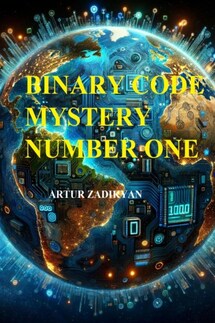Binary code: Mystery number one - страница 59
– Where are we going? Why can't we go straight ahead?
– You haven't been to 51 yet.
– Where?" asked Ruthra.
– You still have a long way to go, wait for it.
– Wait for whom? – Ruthra asked, trying not to show his anger.
So they reached the room, the entrance to which the doppelganger had discovered by retinal scanning. There was nothing here (except a few oddly shaped chairs).
– To adapt, you must attend an introductory lecture," the doppelganger announced nonchalantly.
– Some other nonsense? – Ruthra asked.
There was no reply, of course. The doppelganger remained silent. Ruthra waited, curious and indignant. A minute or so passed.
– Have a seat, listen.
Ruthra sat down in the chair, and the doppelganger moved to the wall. Speech came from somewhere in the ceiling, apparently there were invisible speakers built in. A woman's voice announced:
– Information preparation. Part one. Medical professionals have learned how to beam knowledge directly into the brain. Leading scientists have made a new innovative discovery. They have created a special computer that allows you to pump information into the human brain. The unique discovery belongs to the researchers of the center HRL Laboratories, which is located in the city of Malibu, California. The authors of the project believe that in the future, when this technology can be improved, people will be able to use it to accelerate the acquisition of necessary skills, for example, to quickly learn foreign languages or learning to drive. In addition, each person will be able to create a clone: it will be possible to "print" a person using a 3D printer in just 2 hours and 47 minutes. Special lasers have been developed that can print 100 cells in a few seconds. Nanoengineering experts are studying the possibility of cloning a human heart on a 3D printer. According to them, if the technology is developed, the vital organ can be printed incredibly quickly – in 30 seconds. But that's not all – scientists have created a drug in case of nuclear war. An international group of scientists has developed a drug to combat the effects of radiation on the human body. The drug was created on the basis of the medical department of the University of Texas in the USA.
The voice was silent. Ruthra waited a moment, looked at the doppelganger, who was also silent, then asked:
– All of them?
– That's it. Let's go," the doppelganger said calmly and walked forward, constantly turning down monotonous corridors.
Ruthra followed him. When he finally lost his coordination in space, the doppelganger stopped in front of a wall and said into an invisible speaker, "It's okay." The wall slid apart a little, forming a passage. It was the door to a room.
– Come in," the doppelganger "asked.
Ruthra saw an ordinary office, with a long table with a chair and chairs in the middle, a single shelf of books along the wall, and several shelves of electronic modules, each with glowing lights. There were no windows. In the chair sat a man in his sixties, almost completely gray-haired, with a slightly elongated face, blue eyes, neither fat nor thin.
– Good afternoon," he said and smiled.
– Kind," Ruthra replied without emotion.
– Sit down, I hope you've calmed down. It's always like that at the beginning of the journey.
"So it's practiced here. What kind of place is this? In whose department?" – Ruthra pondered.









